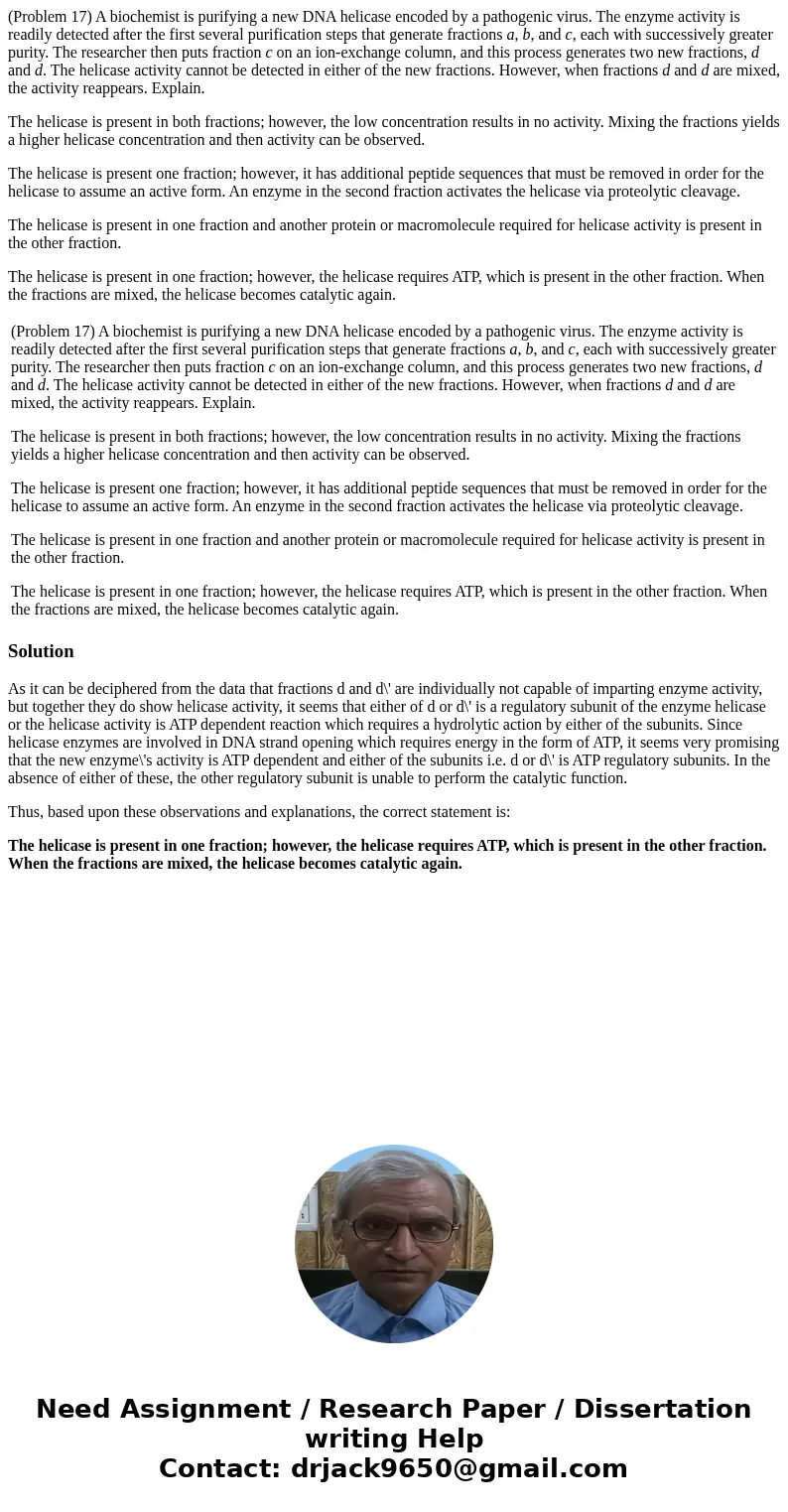Problem 17 A biochemist is purifying a new DNA helicase enco
(Problem 17) A biochemist is purifying a new DNA helicase encoded by a pathogenic virus. The enzyme activity is readily detected after the first several purification steps that generate fractions a, b, and c, each with successively greater purity. The researcher then puts fraction c on an ion-exchange column, and this process generates two new fractions, d and d. The helicase activity cannot be detected in either of the new fractions. However, when fractions d and d are mixed, the activity reappears. Explain.
The helicase is present in both fractions; however, the low concentration results in no activity. Mixing the fractions yields a higher helicase concentration and then activity can be observed.
The helicase is present one fraction; however, it has additional peptide sequences that must be removed in order for the helicase to assume an active form. An enzyme in the second fraction activates the helicase via proteolytic cleavage.
The helicase is present in one fraction and another protein or macromolecule required for helicase activity is present in the other fraction.
The helicase is present in one fraction; however, the helicase requires ATP, which is present in the other fraction. When the fractions are mixed, the helicase becomes catalytic again.
| (Problem 17) A biochemist is purifying a new DNA helicase encoded by a pathogenic virus. The enzyme activity is readily detected after the first several purification steps that generate fractions a, b, and c, each with successively greater purity. The researcher then puts fraction c on an ion-exchange column, and this process generates two new fractions, d and d. The helicase activity cannot be detected in either of the new fractions. However, when fractions d and d are mixed, the activity reappears. Explain. The helicase is present in both fractions; however, the low concentration results in no activity. Mixing the fractions yields a higher helicase concentration and then activity can be observed. The helicase is present one fraction; however, it has additional peptide sequences that must be removed in order for the helicase to assume an active form. An enzyme in the second fraction activates the helicase via proteolytic cleavage. The helicase is present in one fraction and another protein or macromolecule required for helicase activity is present in the other fraction. The helicase is present in one fraction; however, the helicase requires ATP, which is present in the other fraction. When the fractions are mixed, the helicase becomes catalytic again. |
Solution
As it can be deciphered from the data that fractions d and d\' are individually not capable of imparting enzyme activity, but together they do show helicase activity, it seems that either of d or d\' is a regulatory subunit of the enzyme helicase or the helicase activity is ATP dependent reaction which requires a hydrolytic action by either of the subunits. Since helicase enzymes are involved in DNA strand opening which requires energy in the form of ATP, it seems very promising that the new enzyme\'s activity is ATP dependent and either of the subunits i.e. d or d\' is ATP regulatory subunits. In the absence of either of these, the other regulatory subunit is unable to perform the catalytic function.
Thus, based upon these observations and explanations, the correct statement is:
The helicase is present in one fraction; however, the helicase requires ATP, which is present in the other fraction. When the fractions are mixed, the helicase becomes catalytic again.

 Homework Sourse
Homework Sourse